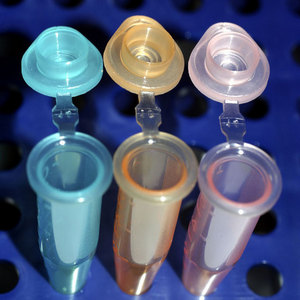Mar. 16, 2007 Research Highlight Biology
A better way to produce proteins
Perfected—a new cell-free system for synthesizing glycoproteins in vitro

Cell biologists at the RIKEN Genomic Sciences Center in Yokohama have developed a highly efficient cell-free system to derive important proteins.
These ‘cell-free protein translation systems’, as they are formally known, lack messenger RNA (mRNA) and therefore can be programmed by adding the gene encoding the protein of interest. As such, all the energy of the system is devoted to producing a single protein from the gene, thus yielding relatively pure samples of that protein.
Typically, bacteria or plants are the source of these cell-free systems as they are cheaper and more reliable in quality than animal-based systems. However, unlike animal-based systems, they lack the ability to add sugar residues to newly synthesized proteins, a process called glycosylation. This modification is vital for the normal folding and function of most animal proteins, and for certain proteins it allows their secretion.
The team at RIKEN, led by Shigeyuki Yokoyama, has now developed a cell-free system that combines the best of both worlds. When searching for a cell that would give them all the features they were looking for—ease of use, low-cost, and a well-developed protein translation/glycosylation system—they hit upon the idea of basing it on a hybridoma cell line, which are immortalized B cells that secrete large quantities of antibodies. Immortalization allows for easy and cost-effective growth in the laboratory, while their animal nature means they are capable of glycosylation. And the fact that they pump out so much protein indicates that they have a very strong protein translation/glycosylation system.
The team shows, in separate experiments, successful programming of extracts from this cell line with mRNA for the HIV-encoded surface protein gp120 and a hormone involved in human reproduction called choriogonadotropin1. Besides actual synthesis they also show that these proteins are correctly glycosylated. But more importantly, for human choriogonadotropin the protein from their cell-free system has biological activity.
The clear advantage of this system is that the hybridoma cell line is quite easy to maintain and grow, so researchers can easily use this system in their laboratory on a cost-effective basis, the team notes. It can also be adapted to bioreactors for pharmaceutical use, and thus scaled up. Also, since the hybridoma cell line is clonal in nature, there will be little batch-to-batch variability that plagues other animal-based cell free systems. Finally, the system is quite robust, so many different types of glycoproteins could be synthesized successfully and in quantity.
References
- 1. Mikami, S., Kobayashi, T., Yokoyama, S. & Imataka, H. A hybridoma-based in vitro translation system that efficiently synthesizes glycoproteins. Journal of Biotechnology 127, 65–78 (2006). doi: 10.1016/j.jbiotec.2006.06.018
